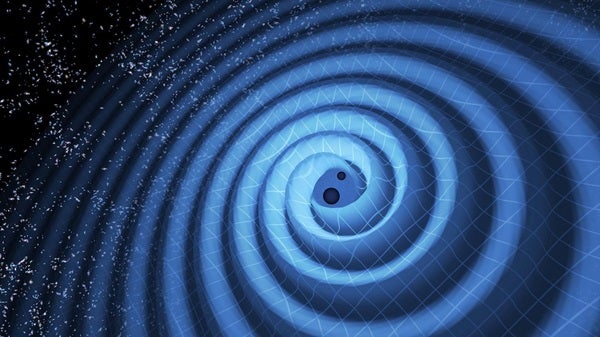Q: How does LIGO translate gravitational-wave signals into an accurate determination of the distance and the masses of colliding objects?
A: In 1916, Albert Einstein’s theory of general relativity showed that massive objects distort the fabric of space-time. The theory also predicted that violent collisions and other processes could send ripples across the universe in all directions. These gravitational waves, traveling through space at the speed of light, would carry information about their origin.
While Einstein’s equations described how a pair of compact objects (like black holes or neutron stars) merged, actually calculating solutions to those equations was impossible for decades. It was only with computer advances in the 1990s that scientists were able to use supercomputers to solve Einstein’s field equations, with the first successful simulation of a binary black hole merger available in 2005. Figuring out faster, more efficient, and more accurate ways to characterize measurements of binary black hole and neutron star mergers is a very active area of research for scientists at gravitational wave observatories such as the Laser Interferometer Gravitational-wave Observatory (LIGO), Virgo, and the Kamioka Gravitational Wave Detector.
Gravitational-wave astrophysicists create millions of simulations with these equations to find out how certain combinations of black holes merge and what their gravitational waves would look like if detected. Each of these unique “waveforms” is stored as a kind of template. So, when a new gravitational-wave signal is picked up in a detector, search algorithms can find the template that best fits. Scientists at LIGO essentially work backward from there to figure out which combination of black holes most likely produced the signal. This lets us very quickly identify and verify gravitational-wave events when they happen so we can tell other astronomers around the world to start observing that area of the sky.










